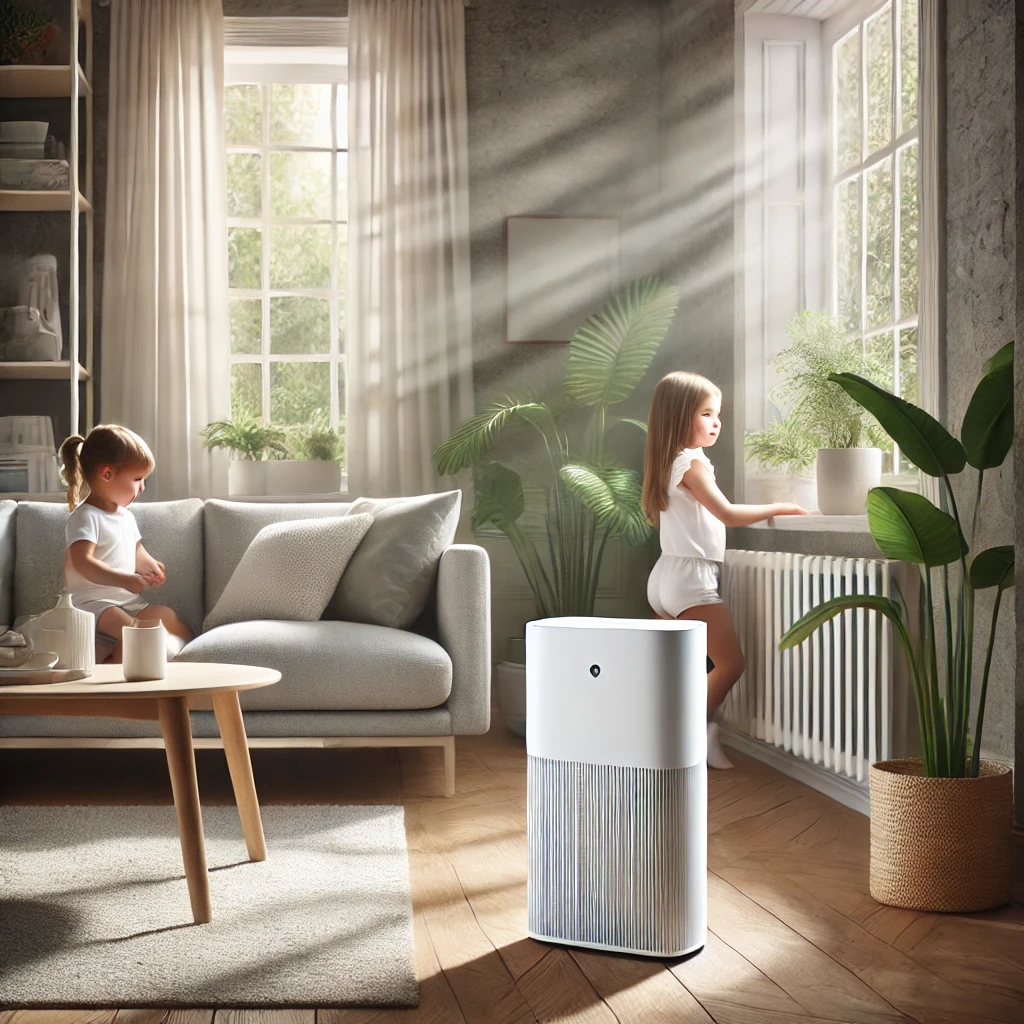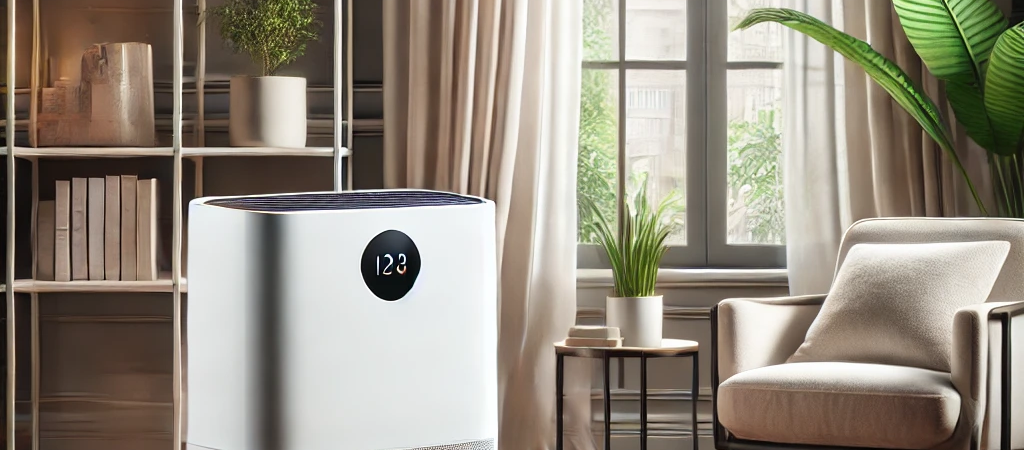Introduction to Air Purifiers
Air purifiers have emerged as essential devices in modern households and workplaces, serving a crucial role in enhancing indoor air quality. With increasing urbanization and industrialization, air pollution levels have risen dramatically, contributing to myriad health issues. The significance of maintaining clean air is underscored by various studies linking poor air quality to respiratory illnesses, allergies, and even cardiovascular diseases. For instance, according to the World Health Organization, 91% of the world’s population lives in places where air quality exceeds guidelines, highlighting the pressing need for solutions like air purifiers.

These devices operate by removing a broad spectrum of pollutants and allergens present in the air, such as dust, smoke, pet dander, mold spores, and volatile organic compounds (VOCs). The technology behind air purifiers typically involves filtration and purification processes that target different contaminants. For example, HEPA (High-Efficiency Particulate Air) filters are adept at capturing particles as small as 0.3 microns with an efficiency of 99.97%, making them highly effective against many common allergens and irritants. Other technologies, such as activated carbon filters, excel at trapping odors and harmful chemicals, ensuring a more breathable indoor environment.
The rising popularity of air purifiers can be attributed not just to environmental factors, but also to a growing awareness of health and wellness. As more individuals recognize the correlation between air quality and overall health, the demand for effective air purification solutions continues to climb. In fact, a market report from 2022 projected the global air purifier market to reach $29 billion by 2027, illustrating both a consumer shift towards healthier living spaces and an acknowledgment of the necessity of air purifiers in combating pollution’s adverse effects. This guide aims to explore various air purifier technologies, shedding light on their functions, effectiveness, and the physics governing their performance in improving air quality.
Overview of Air Purifier Technologies
Air purifiers utilize a variety of technologies to capture and neutralize contaminants in indoor air, aiming to improve air quality. The primary methods include HEPA filtration, activated carbon filters, UV-C light, ionizers, and ozone generators, each with unique operational principles and applications.

HEPA (High-Efficiency Particulate Air) filters are renowned for their ability to trap small particles, including dust mites, pollen, and pet dander, with an efficiency of 99.97% for particles as small as 0.3 microns. This technology relies on mechanical filtration, where air is forced through dense layers of fibers that effectively capture particulate matter. Its effectiveness makes it a popular choice in both residential and commercial environments, particularly for allergy sufferers.
Activated carbon filters operate through adsorption, where gaseous impurities bind to the surface of the activated carbon. These filters excel at removing volatile organic compounds (VOCs), smoke, and odors, making them a favored option for households with cooking or pet-related smells. However, they require regular replacement as their capacity to absorb particles diminishes over time.
UV-C light air purifiers employ ultraviolet light to neutralize bacteria, viruses, and mold spores. The physics behind this process involves the emission of specific wavelengths of light that disrupt the DNA of microorganisms, thus rendering them inactive. While effective at sanitizing the air, UV-C technology should be complemented with particulate filters to target a broader spectrum of impurities.
Ionizers charge air particles so they can clump together and become heavy enough to fall out of the air. While they can effectively reduce airborne pollutants, concerns have been raised regarding ozone production, which may pose health risks. Lastly, ozone generators intentionally produce ozone to eliminate odors and some airborne pathogens; however, ozone can irritate respiratory systems and is often discouraged for use in occupied spaces.
Each air purification technology offers specific advantages and disadvantages, making it essential for consumers to assess their individual air quality needs before selecting an appropriate system.
In-Depth Analysis of Air Purification Technologies
Air purification technologies play a crucial role in enhancing indoor air quality by targeting various pollutants and allergens. One prominent method is the HEPA filter, which uses mechanical filtration to capture particles as small as 0.3 microns with a high efficiency of 99.97%. These filters are designed to trap dust, pollen, smoke, and pet dander, significantly improving the healthiness of indoor environments. Popular models such as the Coway AP-1512HH and the Dyson Pure Cool have demonstrated strong effectiveness ratings, making them suitable for households with allergy sufferers.

Activated carbon filters utilize the principle of adsorption, wherein air contaminants attach to the surface of the carbon granules. This technology is particularly effective in removing volatile organic compounds (VOCs) and odors; however, it has limitations regarding the removal of certain gases, such as carbon dioxide, which may pose challenges in environments with high gas concentration. While models like the Austin Air HealthMate excel in odor removal, users must be aware that activated carbon needs to be replaced regularly to maintain optimal performance.
UV-C light technology aims to sterilize the air by using ultraviolet radiation to deactivate harmful microorganisms such as bacteria and viruses. Though effective, its performance can be limited by airflow and the duration of exposure. An example of a UV-C air purifier is the GermGuardian AC5250PT, which combines UV-C light with HEPA filtration for a layered approach to air purification. Conversely, ionizers and ozone generators produce charged particles that attach to pollutants to facilitate their removal. While ionization can enhance air cleanliness, model selection is essential, as ozone emissions can pose health risks, necessitating careful consideration and non-usage in occupied spaces.
To conclude, understanding the strengths and weaknesses of each air purification technology enables consumers to make informed decisions tailored to their unique needs, enhancing their indoor air quality effectively.
Choosing the Right Air Purifier: Key Considerations
When selecting an air purifier, it is essential to consider several key factors to ensure that the device meets your specific indoor air quality needs. The first aspect to examine is the size of the room where the air purifier will be used. Different models are designed for varying room sizes, so understanding the square footage is crucial. An air purifier with a Clean Air Delivery Rate (CADR) that corresponds to your room size will effectively remove pollutants and improve air quality.
The types of pollutants present in your environment also play a significant role in the selection process. Common indoor air pollutants include dust, pollen, pet dander, smoke, and volatile organic compounds (VOCs). Identifying which contaminants are most prevalent in your home will help you choose an air purifier equipped with the appropriate filtration technology, such as HEPA filters, activated carbon, or UV light options, to target specific pollutants effectively.

Maintenance requirements cannot be overlooked. Some air purifiers demand regular filter replacements, while others are designed for lower maintenance. Assessing the ease of upkeep and the cost associated with maintenance will contribute to a more satisfactory long-term investment. Furthermore, establishing a budget is critical; air purifiers vary widely in price, and understanding which features are necessary versus optional can guide prudent spending.
A comparative analysis of the advantages and disadvantages of various air purification technologies, as discussed in prior sections, will assist in making an informed decision. Consider creating a checklist to help evaluate different models based on their effectiveness, certifications, and user reviews. This thorough assessment will ultimately empower you to select an air purifier that maximizes indoor air quality while aligning with your personal preferences and requirements.
